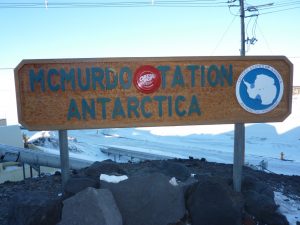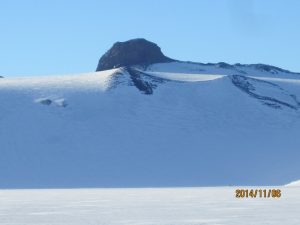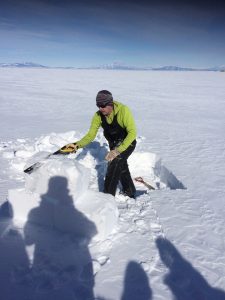The installation of a seismic station on the ice takes a team effort, including help from the KBA Twin Otter pilots. Our seismic stations differ from the Wiens/Aster project installed yesterday in that they also contain barometers to measure the displacement due to atmospheric pressure changes. DR16 is our station that is farthest south, away from the ice front (see map in Taking the Pulse).
Getting Started.

Loading our gear and the seismic station onto the Twin Otter at Willy Field, with Mt. Erebus in the background.
In the Air.

Inside the Twin Otter cabin — room for four and the seismic station components that will be assembled and tested on the ice.
In Route.

Reflection of the sun off the Ross Ice Shelf.
The seismometer and support electronics package are buried in separate holes separated by about 30ft.
Support Electronics Installation.

Installation of the box containing power, data storage, GPS, and telecommunications electronics.
Seismometer Installation.

The seismometer is buried after leveling and aligning with true North and testing in in the bottom of a 40in deep, 5ft square excavation.
There is lots of activity and cooperation during installation.
Remember, today is tomorrow for those east of the dateline, e.g. in the U.S.
Panoramic video of DR16 seismometer installation, showing what the Ross Ice Shelf icescape looks like.
DR16_Installation_11Nov2014
Some majestic views of Antarctica on the way back to McMurdo.
The Royal Society Range.

Mount Discovery: A Dormant Volcano


Another view of the Royal Society Range.

A Crevasse Near McMurdo.

Our transport plane, Twin Otters, lands on skis in very short landing and take-off skiways.
Twin Otter Airplane Shadow on the Ice During Landing.
Note the ski shadows at the nose and under wing.









































